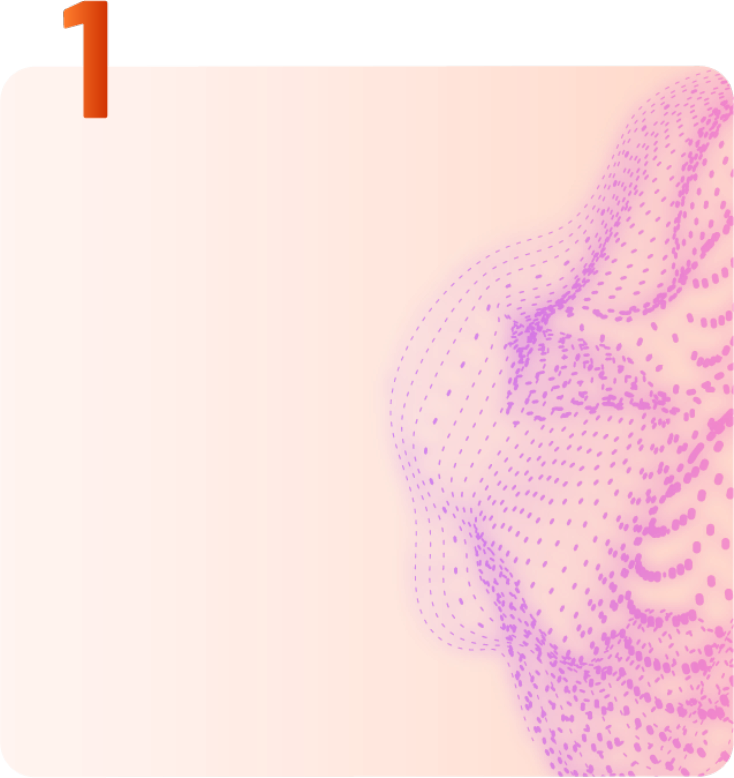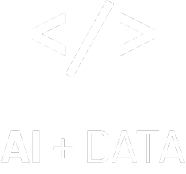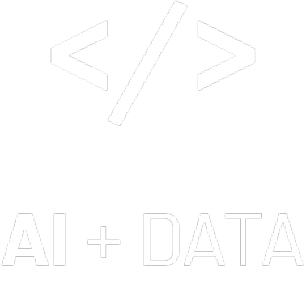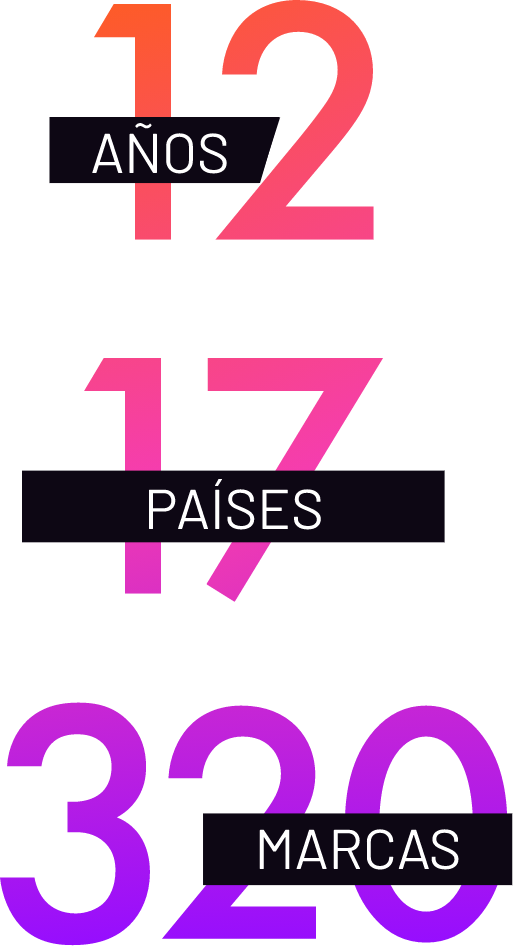























































Los modelos predictivos utilizan datos históricos para anticipar comportamientos futuros, identificar oportunidades y minimizar riesgos. Son una herramienta clave para transformar datos en decisiones de negocio más precisas y efectivas.
Aplicamos estos modelos para detectar patrones, proyectar tendencias y optimizar cada decisión de negocio. Convertimos la información en una ventaja competitiva.



ANALIZA EL PASADO
OBSERVA PATRONES
PROYECTA EL FUTURO
ANALIZA EL PASADO
OBSERVA PATRONES
PROYECTA EL FUTURO



Recopilamos resultados y los proyectamos hacia el futuro. El conocimiento permanece en la empresa y el negocio comienza a construir resultados a partir de datos, por los datos, y creando nuevos.
Recopilamos resultados y los proyectamos hacia el futuro. El conocimiento permanece en la empresa y el negocio comienza a construir resultados a partir de datos, por los datos, y creando nuevos.


Entonces, tu empresa pasa de observar las decisiones pasadas y los resultados actuales,
a escenarios multidimensionales con decisiones futuras accionables y resultados medidos.


Impulsores de Micro Y Macroeconomía
Inflación, salarios, nivel de actividad, importaciones y exportaciones, gas, energía, etc.
Aumenta la precisión y la capacidad para construir escenarios con divergencia y correlación a partir de factores externos.
Tendencias de Comportamiento del Consumidor
Poder de consumo, confianza del consumidor, cuota de compra por categoría, etc.
Captura tendencias mapeándolas y añadiendo las dimensiones de los datos para una mejor y más profunda subestimación de los posibles cambios en el mercado.
Segmentacion y Clusterizacion Multidimensional
Mix de productos, historial de compra, ciclo de recompra, ubicación de entrega, grupo familiar, gasto, etc.
Encuentra la oportunidad dentro del grupo (cluster), construye la capacidad para crear un impulso de compra con un enfoque empático para ganar la preferencia.
Hiperpersonalización
Multiplica +100 campañas y actividades de ventas.
Crea +100 eventos de compra, hacer que compitan, y luego ofrecer el correcto para cada consumidor.
Una relación 1 a 1 real: contenido, mensajes y ofertas para cada grupo (cluster).
Crecimiento B2B y Gestión de Ganancias
Tendencias económicas, tendencias de consumo, tamaño potencial del mercado, oportunidades, demanda futura de productos, escenarios de precios, etc.
Personaliza y entrega tus capacidades de IA al nivel de tus socios estratégicos, hazlos crecer y que sean capaces de gestionar las ganancias.
Fase 1
Control Humano
~4% ML
~1% IA
Fase 2
Control Hibrido
~20% ML
~30% IA
Fase 3
Control IA
~1% ML
~95% IA



Generamos insights accionables a partir de datos, para que tomes decisiones informadas y alineadas con resultados de alto impacto.
Capacidades predictivas para decisiones que marcan la diferencia.
Aplicamos modelos de análisis avanzados para anticipar escenarios, reducir la incertidumbre y guiar tu negocio hacia resultados positivos.

Los modelos predictivos revelan patrones ocultos, identifican oportunidades de negocio y anticipan movimientos del mercado antes que sucedan.
Con análisis predictivo, descubrís tendencias emergentes, segmentos desatendidos y oportunidades de expansión.
Los modelos predictivos no solo optimizan lo que ya hacés, sino que te permiten encontrar espacios de innovación y expansión aún sin explotar.

La predicción de tendencias te permite optimizar la inversión, evitando tanto el sobrecosto como la subutilización de recursos clave.
Anticipar el comportamiento del mercado, podés distribuir tus recursos de forma más eficiente y con menor margen de error.
Pronosticar tendencias te ayuda a tomar decisiones basadas en datos, asignando presupuesto y esfuerzos donde generan mayor retorno.

Generamos insights accionables a partir de datos, para que tomes decisiones informadas y alineadas con resultados de alto impacto.
Capacidades predictivas para decisiones que marcan la diferencia.
Aplicamos modelos de análisis avanzados para anticipar escenarios, reducir la incertidumbre y guiar tu negocio hacia resultados positivos.

Los modelos predictivos revelan patrones ocultos, identifican oportunidades de negocio y anticipan movimientos del mercado antes que sucedan.
Con análisis predictivo, descubrís tendencias emergentes, segmentos desatendidos y oportunidades de expansión.
Los modelos predictivos no solo optimizan lo que ya hacés, sino que te permiten encontrar espacios de innovación y expansión aún sin explotar.

La predicción de tendencias te permite optimizar la inversión, evitando tanto el sobrecosto como la subutilización de recursos clave.
Anticipar el comportamiento del mercado, podés distribuir tus recursos de forma más eficiente y con menor margen de error.
Pronosticar tendencias te ayuda a tomar decisiones basadas en datos, asignando presupuesto y esfuerzos donde generan mayor retorno.


ANÁLISIS INICIAL Y DIAGNÓSTICO
Descubrimiento y Recolección de Datos
Recolección de datos históricos relevantes.
Limpieza y Preparación de Datos
Limpieza y transformación de datos para asegurar calidad y consistencia.

DISEÑO DE SOLUCIÓN PERSONALIZADA
Ingeniería de Características
Recolección de datos históricos relevantes.
Selección de Modelo
Elección del tipo de modelo adecuado según el problema y las características de los datos.
Entrenamiento del Modelo
Ajuste del modelo con los datos de entrenamiento para aprender patrones y relaciones.

IMPLEMENTACIÓN
Implementación
Integración del modelo en aplicaciones de negocio para predicciones en tiempo real.
Capacitación del Equipo
Compartir buenas prácticas y conocimientos para fomentar una cultura de innovación y aprendizaje continuo.
Talleres prácticos y capacitaciones personalizadas para cubrir necesidades y niveles de habilidad específicos del equipo.

EVOLUCIÓN Y OPTIMIZACIÓN
Optimización
Mejorar la precisión del modelo utilizando todas las fuentes de datos en proyecciones de escenarios pasados hasta alcanzar el objetivo deseado.
Evolución
La IA evoluciona todos los días: nuevas herramientas, nuevas capacidades, nuevos costos, nuevas oportunidades. Nuestro enfoque de evolución en IA aprovecha las capacidades actuales adoptando nuevas tecnologías, herramientas y soluciones para mantenerte a la vanguardia de la innovación.



Análisis Predictivo
Utilización de algoritmos de IA para pronosticar tendencias y comportamientos futuros, lo que permite una planificación proactiva y eficaz.
Personalización de la Experiencia del Cliente
Uso de datos e IA para ofrecer experiencias personalizadas al cliente, mejorando la satisfacción y la lealtad de forma innovadora, eficiente y continua.
Integración Avanzada
Combinación de inteligencia artificial y análisis de datos para proporcionar soluciones integradas que mejoran la toma de decisiones estratégicas.
Optimización Operacional
Aprovechamiento de la IA para automatizar procesos y mejorar la eficiencia operativa, reduciendo costos y aumentando la productividad.
Detección de Patrones y Anomalías:
Implementac ión de soluciones de IA que identifican patrones ocultos y detectan anomalias en grandes volúmenes de datos, mejorando la seguridad y la toma de decisiones.
Optimizacion de Marketing
Fusión de IA y análisis de datos para optimizar estrategias de marketing, identificando las mejores oportunidades y canales para llegar a su audiencia.



Se utiliza para predecir resultados categóricos.

Se utiliza para predecir valores numéricos continuos.

Se utiliza para pronosticar valores futuros basados en datos históricos.

Se utiliza para agrupar puntos de datos similares.

Visualiza los procesos de toma de decisiones paso a paso.

Modelos complejos inspirados en el cerebro humano, capaces de aprender patrones y hacer predicciones.







